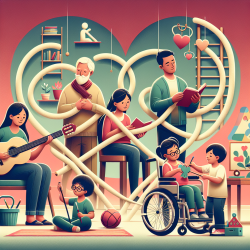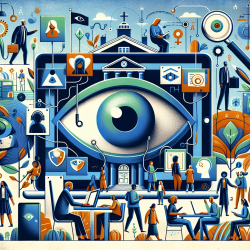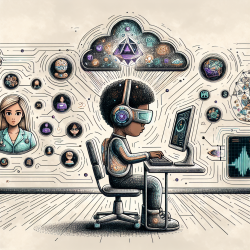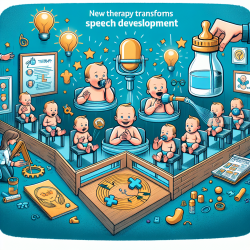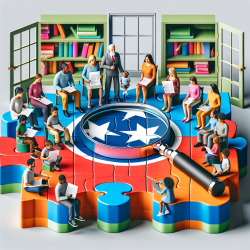Introduction
In the ever-evolving field of childhood disability research and practice, the concept of family plays a pivotal role. Traditionally, the nuclear family structure has been the focal point, often sidelining diverse family configurations. However, the research article titled "Reconceptualizing the Family to Improve Inclusion in Childhood Disability Research and Practice" sheds light on the importance of embracing a broader definition of family. This blog post aims to guide practitioners in enhancing their skills by implementing the outcomes of this research and encouraging further exploration.
The Importance of Redefining Family
Families are the cornerstone of a child's development, especially for children with disabilities. The traditional view of family as a nuclear unit is outdated and fails to capture the diversity of modern family structures. The research emphasizes that a more inclusive definition of family can lead to better outcomes in rehabilitation practice and research.
Practical Strategies for Practitioners
To create inclusive clinical environments, practitioners should:
- Ask open-ended questions about family composition during intake to understand the child's support system.
- Use gender-inclusive language and respect the pronouns provided by family members.
- Identify who the family wants involved in therapy and tailor communication accordingly.
- Reflect on personal biases and seek to understand diverse family experiences through literature and client interactions.
Risks of Reinforcing Traditional Family Structures
By not embracing diverse family structures, practitioners risk reinforcing stereotypes and creating barriers to service. This can lead to families feeling unwelcome, delaying or avoiding services, and ultimately missing opportunities for early intervention. A holistic understanding of family dynamics is crucial for effective therapy and accurate assessments.
Implications for Research
The conceptualization of family significantly impacts research outcomes. Researchers must ensure that their study designs and participant selection criteria are inclusive of all family structures. By doing so, they can gather comprehensive data that reflects the true diversity of family experiences.
Creating Inclusive Research
Researchers can foster inclusivity by:
- Justifying participant selection criteria and using language that resonates with target communities.
- Ensuring data collection forms and questions are inclusive of all family members and structures.
- Engaging in critical reflexivity to challenge assumptions and biases.
Conclusion
Reconceptualizing the family in childhood disability research and practice is not just a theoretical exercise but a practical necessity. By embracing diverse family structures, practitioners and researchers can enhance inclusivity, improve outcomes, and foster a more equitable environment for all families. To delve deeper into the original research, please follow this link: Reconceptualizing the Family to Improve Inclusion in Childhood Disability Research and Practice.
